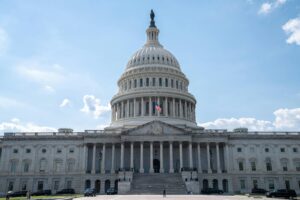A quiet but seismic shift is happening in U.S. labor law. In the Fifth Circuit—covering Texas, Louisiana, and Mississippi—the National Labor Relations Board (NLRB) has been effectively sidelined. Recent federal court rulings have blocked the agency from enforcing unfair labor practice (ULP) cases in that jurisdiction.
The result is what Bloomberg Law calls a “labor law gap”: workers and unions can still file complaints, but the NLRB cannot act on them. Until the Supreme Court steps in, employers in this region hold a unique advantage that doesn’t exist elsewhere in the country.
Here’s what this means, why it matters, and what comes next.
What Triggered the Gap?
SpaceX and the Constitutional Challenge
It started when SpaceX challenged the NLRB’s structure. The company argued that the Board’s setup—especially protections preventing the President from easily removing its members and administrative law judges—violates the U.S. Constitution’s separation of powers.
The Fifth Circuit agreed in part, issuing an injunction that halts NLRB enforcement in the region. The court reasoned that being forced into proceedings before an “unconstitutional” agency is itself an irreparable harm.
Amazon and Forum Shopping
Amazon quickly took advantage of the opening. Even though its union battles are centered in New York, Amazon filed suit in Texas to stop an NLRB case tied to a Staten Island warehouse. The Fifth Circuit’s decision gives employers incentive to file in favorable jurisdictions to avoid Board enforcement.
This kind of forum shopping spreads the effect of the ruling far beyond Texas, Louisiana, and Mississippi.
If you’re an employer, union organizer, or worker, stay informed. Track NLRB cases, watch for Supreme Court updates, and understand how these rulings could affect your rights or responsibilities.
Stay InformedWhy It Matters
For Employers
Leverage in disputes: Companies can stall or block NLRB cases by filing in the Fifth Circuit.
Strategic advantage: Even if alleged violations occur elsewhere, bringing a case into Fifth Circuit territory can shield employers from enforcement.
For Workers and Unions
Weak protections: In the Fifth Circuit, filing an unfair labor practice charge may not lead to real enforcement.
Delay tactics: Organizing campaigns and bargaining disputes can be dragged out, weakening momentum for workers.
Unequal treatment: Workers in different parts of the U.S. now face different levels of legal protection.
For the NLRB and Federal Agencies
Operational paralysis: Until the Supreme Court clarifies, the NLRB’s authority is fractured.
Broader implications: If removal protections are struck down, it could affect many independent agencies—not just the NLRB, but also the FTC, FCC, and others.
What Happens Next?
Supreme Court Review
The Supreme Court is expected to take up the issue. A ruling would clarify whether Congress can give agency officials removal protections, or whether such rules unconstitutionally limit executive power.
If the Court upholds removal protections, NLRB enforcement in the Fifth Circuit resumes.
If the Court strikes them down, Congress may need to restructure the agency—and thousands of past NLRB rulings could face challenges.
En Banc Review
The Fifth Circuit could also revisit the ruling en banc (all judges hearing the case together). But unless that happens, the gap will remain until the Supreme Court speaks.
Employer Strategy
Expect more companies to file in the Fifth Circuit to delay or derail NLRB proceedings, even when disputes have little to do with the region.
Key Takeaways
The Fifth Circuit has created a temporary hole in U.S. labor law, blocking NLRB enforcement.
Employers gain leverage by filing suits in the Fifth Circuit, even for disputes elsewhere.
Workers and unions face weaker protections in Texas, Louisiana, and Mississippi.
The Supreme Court will likely decide the issue, with broad implications for independent federal agencies.
Conclusion
The Fifth Circuit’s ruling has turned labor law into a patchwork: strong in some regions, weakened in others. For unions, workers, and businesses, the stakes couldn’t be higher. The Supreme Court’s eventual decision will either restore the NLRB’s footing or reshape the future of agency independence in America.
Until then, employers will continue to exploit the gap, and unions will face an uphill battle in defending worker rights in the Fifth Circuit.
Call to Action:







